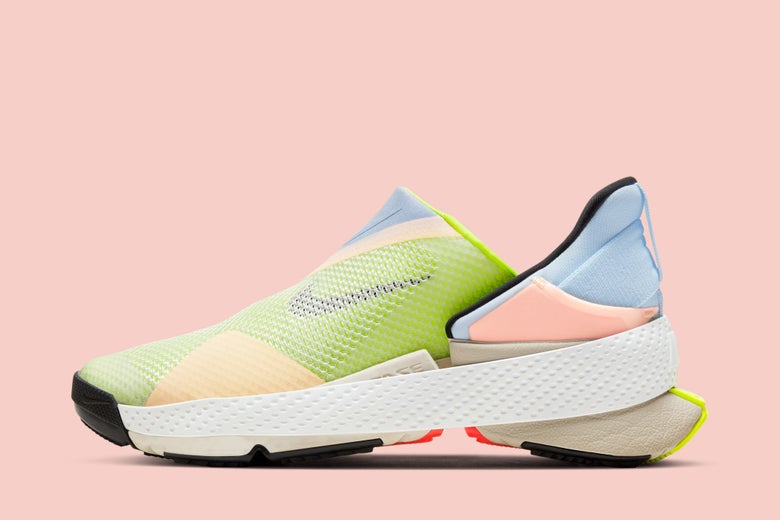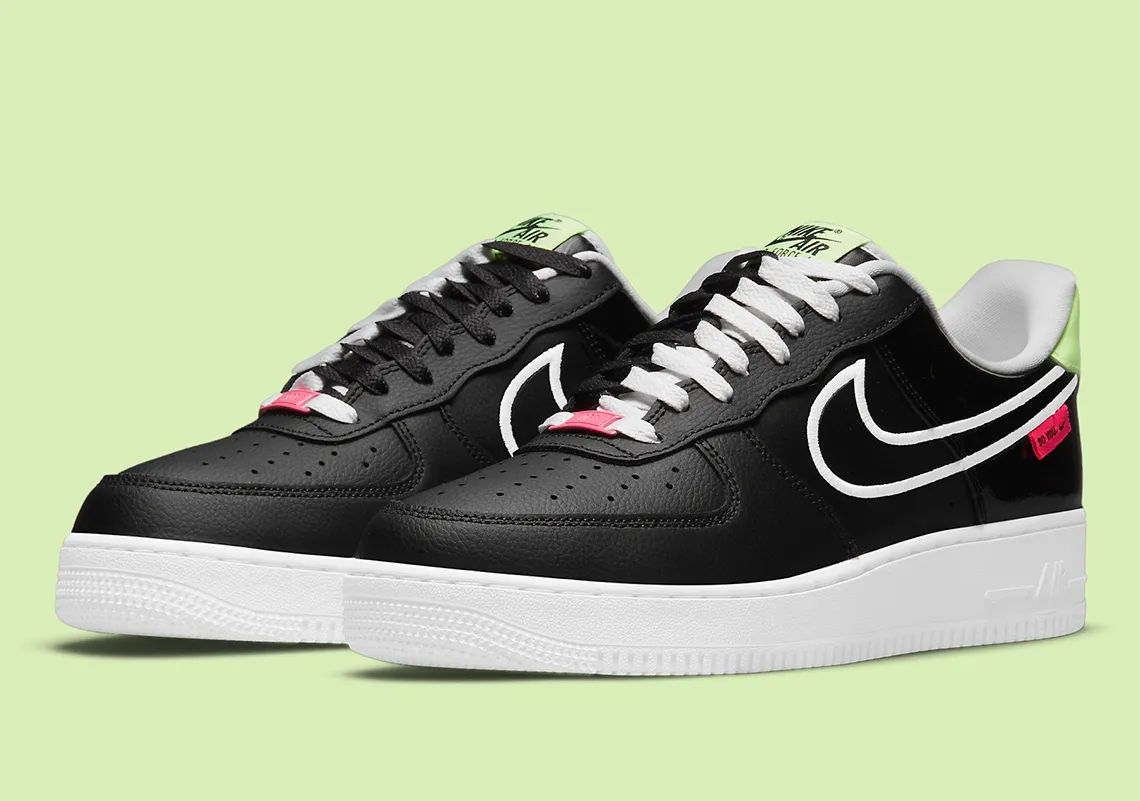
On Monday, Nike announced its latest creation: the Go FlyEase, a “hands free” shoe with a patent-pending bi-stable hinge and signature “tensioner,” a midsole rubber band engineered to be an “intuitive” wear. The press release described the tensioner as a reimagining of “movement as basis for accessible and empowering design” that is characteristic of the Nike Flyease platform to provide greater access to sport.
Along with initial excitement about the stylish futuristic design—they’re reminiscent of the self-lacing shoes from Back to the Future: Part II—the announcement also provoked a wave of ableist responses. Are these shoes for the lazy, are they convenient, or both? Have we gotten so accustomed in the pandemic that we’ve become unproductive to the point we cannot tie our own shoes?
Advertisement
Advertisement
Advertisement
The marketing of these shoes created ripe conditions for what disabled writer and design activist Alex Haagaard describes as the #PeeledOrangePhenomenon : “a device that’s widely derided by abled people as a needless technological frivolity, but desired by disabled people.” These are products designed to create access for disabled people, but the marketing often erases disability. American Paralympian Sara Reinersten, a member of the Nike FlyEase design team, explained that the Go FlyEase is “one of the most universal shoes ever. This is for everybody,” and Nike’s “Behind the Design” video elaborated that the “original concept behind this shoe was to support our adaptive athletes better.” Yet disability is not explicitly mentioned anywhere in the press release or discussed in interviews—though the shoes are promoted as “sophisticated, accessible solutions.”
Advertisement
Advertisement
Framing accessibility as an edgy marketing slogan without centering disabled people is problematic. Disability is not a bad word. The #SayTheWord campaign started by activist Lawrence Carter-Long, for instance, has drawn attention to how language shapes perceptions: Using euphemisms about disability and disabled experience is harmful and only reinforces negative and stigmatizing stereotypes about disability.
Nike itself failed to acknowledge its own story about the origin roots of the FlyEase: In 2008, innovative designer Tobie Hatfield created an accessible shoe for executive Jeff Johnson after a stroke left Johnson with limited dexterity. The custom pair featured two pieces of hinged Velcro around the instep and heel and was intended as a temporary solution during his recovery. Hatfield then turned his focus on flexible sole platforms—the Nike Free—and performance prosthetics for Paralympic athletes. Then in 2012, Nike CEO Mark Parker shared with Hatfield a letter from teenager Matthew Walzer, who had cerebral palsy and wanted a laceless athletic shoe with ankle support that was easy for him to slip on.
Advertisement
This became the FlyEase: a LeBron Zoom Soldier 8 with a wrap-around zipper that opens at the heel of the shoe, making it easy for Walzer to slip his foot in and out and, once zipped, to move easily and securely. Nike launched the FlyEase in 2015, marketing it as an inspirational, heartwarming collaboration between an inventor and a 16-year-old disabled user, who came together to solve a consumer problem and create an accessible product “for all.”
Advertisement
Advertisement
This is where the problem begins. As one individual tweeted: “The design isn’t lazy the marketing is.”
In disability-centric designs, there’s a very specific way that internal grassroots internal efforts are sold to the powers that be. Executives are pitched on the mass appeal of accessibility, on the basis that by designing for a disabled person, everyone benefits. This highly simplistic view has become one of the core tenets of so-called inclusive design. And while there is a traceable history of this phenomenon, when pursued as a corporate strategy, it risks causing more harm than the design solves. This harm happens through a four-part process:
Advertisement
First, disability inspires. Nike first told audiences about a letter its CEO received from a disabled teenager. The disability narrative then progressed into the Inspiration Exploitation trope in which disabled people are manipulated and objectified in the media for the benefit of everyone else. In 2018, Nike surprised Justin Gallegos, a disabled runner at Oregon State, with a professional contract. It was a preposterous story, because NCAA rules stipulate that student-athletes lose their amateur status if they make money on their name, image, or likeness.
Also, treating a professional contract as a gift instead of a commitment makes obvious that Nike did not perceive Justin as a valuable signee. It just wanted the feel good story. Gallegos went on to hawk his own FlyEase for a few months before disappearing from Nike’s narrative entirely.
Advertisement
Advertisement
Secondly, once mainstream audiences are sufficiently inspired, marketing teams shift their focus into achieving the mass appeal that executives were sold on. Believing that a mere mention of the word disability stigmatizes their product, euphemisms are added. In Nike’s “Behind the Design” advertisement, designers used the phrase “adaptive athletes” in lieu of “disabled athletes”—yet only one disabled person appears in the video, at the very moment we learn the Go FlyEase is “for everyone.”
Thirdly, disability is erased. The Nike press release and the subsequent viral GIF on Twitter shows someone walking nimbly into the screen, stepping on and off in the shoes.
Advertisement
Advertisement
Advertisement
The person does not appear in any way to be disabled (which doesn’t mean that they’re not). Without context, disability is erased from a story that began decades ago with a stroke survivor and developed to include other physical disabilities. Nike missed a massive opportunity to recognize and validate more forms of disability, especially invisible ones. Acknowledging that some disabilities are less obvious is a more powerful strategy than “for everyone” because it expands, rather than erases.
Finally, the product is made inaccessible to disabled people. The responses to the Go FlyEase indicates how different disabled users perceive the usefulness of the shoe and want their own pair. But disabled people disproportionately live in poverty, and there are concerns that the $120 launch price will put the Go FlyEase out of reach for most disabled consumers.
For FlyEase to have a future, it needs to honor its history by finding a way to appeal to disabled consumers beyond tokenistic representation or inspiration. It would require a campaign that demonstrates a commitment to learning about what disability is, rather than merely promoting accessibility to reach mass audiences. And if we’ve learned one thing as disabled design critics, it is that stories inform the way we design. Disabled people are the original FlyEase consumer. It’s about time Nike stops erasing us.
Future Tense is a partnership of Slate, New America, and Arizona State University that examines emerging technologies, public policy, and society.
The Link LonkFebruary 06, 2021 at 02:58AM
https://ift.tt/2YMEraT
Why won't Nike use the word disabled to promote the Go FlyEase shoe? - Slate
https://ift.tt/3g93dIW
Nike

No comments:
Post a Comment